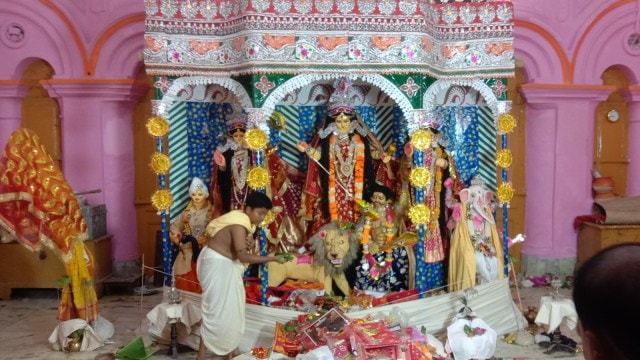
Written by Diya Choudhury
“Where do you live?” sounds like an easy question. But it has never been that easy for me. How do I explain (without being too melodramatic) that my front door opens into the tranquil yet chaotic world of fish markets, mishti doi, and chai adda that is Delhi’s Chittaranjan Park, commonly known as CR Park, and my back door leads straight into the restless hum of Kalkaji, with its jam-packed market streets, endless bargaining, and the never-ending quest for parking. My home is, quite literally, located in the middle stretch between these two neighbourhoods: One steeped in nostalgia and cultural preservation, the other bustling with commerce and chaotic cadence.
In some aspects, these two places can be seen as metaphors for Delhi; layered, sometimes conflicting, but ultimately coexisting identities, each thriving in its own territory but contributing to a larger cultural ecosystem. And I live right at that junction.
Built as a refugee colony for displaced Bengalis after Partition, CR Park has always been known as “Mini Bengal”, a well-preserved cultural island where time seems to stand still. From the fish markets to the Kalibari Mandir, from sweet shops overflowing with sandesh, roshogolla, and mishti doi, to the never-ending adda sessions, everything about CR Park carries the nostalgia of a community that rebuilt itself after loss. But step across to Kalkaji and the air changes. One of Delhi’s oldest neighbourhoods, Kalkaji is a melting pot of people from Punjab, UP, Haryana, Bihar, and beyond. Its streets are crowded, its shops resourceful, its energy restless.
My family moved here in the early 1990s from government quarters in Gole Market, where my grandmother worked at the National Archives. This is where my parents married, and I was born. Since then, life between CR Park and Kalkaji has involved growing up with two very different groups of neighbours — not just in the literal sense of people living next door, but also in the broader sense of what makes a place feel like home.
At home, Sundays follow the same rhythm as any Bengali household — Rabindra Sangeet floating in the background since morning, a heavy breakfast of radhaballabhi, then lunch of ilish maach jhaal with rice, and finally a well-deserved, long, lazy afternoon nap. But our lives are enveloped around the trusted stores of Kalkaji, from Rakhejas to Liberty Dry Cleaners.
As the Durga Pujo draws near, CR Park prepares itself for its annual transformation, a riot of colours, sounds, and aromas that can be felt long before you step into the neighbourhood. The month-long Vastra Mela sets the stage, pulling people into its festive orbit, where weavers from various parts of India, Bangladesh, and Sri Lanka display their exquisite dhakai jamdanis, korial, and Murshidabad silks, among others, share space with fish cutlets, kathi rolls, and, of course, the irresistible puchkas from the markets.
Festivals blur any line, if any, between these two worlds, Navratri pujas blending into Durga Puja pandal-hopping, Diwali gift exchanges flowing into Kali Puja nights. As children, we eagerly waited for Kanjak, receiving plates of chana, puri, and halwa, alongside crisp notes of 10 (and later 50) rupees, until we outgrew eligibility. This duality has seeped into our daily lives. We eat shukto and rice as happily as we relish chhole bhature.
Over time, I realised that neighbours are not just people behind walls. They are the figures and instances that shape our everyday life: From the fishmonger in CR Park who ensures that my father gets the best pieces and prices, to the momo-wale bhaiya in Kalkaji who can spot my brother from a kilometre away. Some are constants, others fleeting presences — but all of them, in their own ways, are neighbours.
The best part of living between these two places is the gift of an insider-outsider view. I’ve spent over 27 years in this in-between, learning to live, survive, and even thrive in chaos. From CR Park, I inherited culture, ritual, and the value of community memory. From Kalkaji, I learned resilience, adaptability, and the simple pleasures of everyday life. My neighbours, then, were never just the families next door; they were entire ways of being.
And perhaps that’s the true meaning of neighbours. They are not only the people who share your walls, but those who share your days and, essentially, your lives.
The writer is a New Delhi-based development sector professional, working in child protection, gender and social development